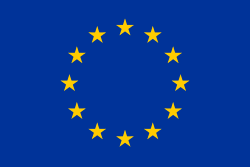Lista över Europeiska unionens särskilda representanter
Denna lista över Europeiska unionens särskilda representanter innefattar samtliga särskilda representanter som unionen har i omvärlden. De särskilda representanterna utses av Europeiska unionens råd på förslag av den höga representanten för utrikes frågor och säkerhetspolitik. De ansvarar för särskilda politiska frågor under ledning av den höga representanten.[1]
Lista
Särskilda representanter
1. Europeiska unionens särskilda representant i Bosnien och Hercegovina – Luigi Soreca[2] tidigare Lars-Gunnar Wigemark[3][4] och därefter Johann Sattler[5][6]
2. Europeiska unionens särskilda representant i Kosovo – Aivo Orav[7], tidigare Nataliya Apostolova[8][9] och därefter Tomáš Szunyog,[10][11][12]
3. Europeiska unionens särskilda representant för Sydkaukasien och för krisen i Georgien – Magdalena Grono[13], tidigare Toivo Klaar[14][15][16][17][18][19]
4. Europeiska unionens särskilda representant för Centralasien – Eduards Stiprais[20], tidigare Terhi Hakala[21], och dessförinnan Peter Burian[22][23][24][25]
5. Europeiska unionens särskilda representant för fredsprocessen i Mellanöstern – Luigi Di Maio[26], tidigare Sven Koopmans[27] och dessförinnan Susanna Terstal[28][29][30][31]
6. Europeiska unionens särskilda representant för Afrikas horn – Annette Weber[32][33][34], tidigare Alexander Rondos[35][36][37]
7. Europeiska unionens särskilda representant för Sahel – João Cravinho[38], tidigare Emanuela del Re[39][40][41] och dessförinnan Ángel Losada Fernández[42][43][44]
8. Europeiska unionens särskilda representant för mänskliga rättigheter – Olof Skoog[45], tidigare Eamon Gilmore[46][47][48]
9. Europeiska unionens särskilda representant för dialogen mellan Belgrad och Pristina och för andra regionala frågor som rör västra Balkan – Peter Sørensen,[49] tidigare Miroslav Lajčák[50][51][52][53]
10. Europeiska unionens särskilda representant för Gulfregionen – Luigi Di Maio[54][55]
11. Europeiska unionens särskilda representant för området kring de stora sjöarna – Johan Borgstam[56]
Se även
- Europeiska unionens höga representant för utrikes frågor och säkerhetspolitik
- Gemensamma utrikes- och säkerhetspolitiken
- Lista över Europeiska unionens ambassadörer
Referenser
Noter
- ^ ”Artikel 33 i fördraget om Europeiska unionen”. EUT C 202, 7.6.2016, s. 34. EUR-Lex. https://eur-lex.europa.eu/legal-content/SV/TXT/PDF/?uri=OJ:C:2016:202:FULL.
- ^ [1]
- ^ [2]
- ^ [3]
- ^ [4]
- ^ [5]
- ^ [6]
- ^ [7]
- ^ [8]
- ^ [9]
- ^ [10]
- ^ [11]
- ^ [12]
- ^ [13]
- ^ [14]
- ^ [15]
- ^ [16]
- ^ [17]
- ^ [18]
- ^ [19]
- ^ [20]
- ^ [21]
- ^ [22]
- ^ [23]
- ^ [24]
- ^ [25]
- ^ [26]
- ^ [27]
- ^ [28]
- ^ [29]
- ^ [30]
- ^ [31]
- ^ [32]
- ^ [33]
- ^ [34]
- ^ [35]
- ^ [36]
- ^ [37]
- ^ [38]
- ^ [39]
- ^ [40]
- ^ [41]
- ^ [42]
- ^ [43]
- ^ [44]
- ^ [45]
- ^ [46]
- ^ [47]
- ^ [48]
- ^ [49]
- ^ [50]
- ^ [51]
- ^ [52]
- ^ [53]
- ^ [54]
- ^ [55]
| EU-portalen – temasidan för Europeiska unionen på svenskspråkiga Wikipedia. |
Media som används på denna webbplats
The Flag of Europe is the flag and emblem of the European Union (EU) and Council of Europe (CoE). It consists of a circle of 12 golden (yellow) stars on a blue background. It was created in 1955 by the CoE and adopted by the EU, then the European Communities, in the 1980s.
The CoE and EU are distinct in membership and nature. The CoE is a 47-member international organisation dealing with human rights and rule of law, while the EU is a quasi-federal union of 27 states focused on economic integration and political cooperation. Today, the flag is mostly associated with the latter.
It was the intention of the CoE that the flag should come to represent Europe as a whole, and since its adoption the membership of the CoE covers nearly the entire continent. This is why the EU adopted the same flag. The flag has been used to represent Europe in sporting events and as a pro-democracy banner outside the Union.